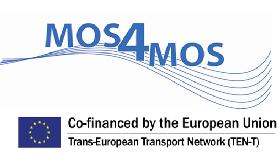MOS4MOS Project
The MOS4MOS project was carried out by a group of partners from Spain, Italy, Slovenia and Greece. It´s timeline was set to run from March 2011 until July 2012.
The mission of the MOS4MOS project was to provide the proper combination of measures for ports to become efficient gateways for SSS freight. It aimed to achieve this through the following objectives:
- To contribute to establishing a European maritime space without barriers
- To facilitate and simplify the compliance with regulations (Customs, safety and other national and European rules)
- To promote intermodal sustainable transport solutions that reinforce the EU Motorways of the Sea (MoS) strategy
- To take full advantage of existing SSS services and facilities and promote a sustainable growth of these solutions
Objectives
The Trans-European Transport Network Executive Agency is dedicated to supporting the European Commission and TEN-T project managers and promoters, by ensuring the technical and financial management of the projects and the successful implementation of the TEN-T Programme. With shared visions and ambitions, TEN-T and MOS4MOS work together towards the improvement of the existing transport networks in the European Union.
Without the generous financial support of the TEN-T Executive Agency of the European Commission, the MOS4MOS project would not have been able to begin with the degree of success and cooperation amongst all the partners, as it did.
Partners
The MOS4MOS project was carried out by ports and companies around the Mediterranean. The partners came from Spain, Italy, Slovenia and Greece.
In this initiative, all of the partners have gotten involved (either by leadership or through support) in the development of 16 prototypical solutions to the issues surrounding the efficient use of the Motorways of the Sea in today´s Mediterranean. Out of the many proposals, 14 prototypes were selected to be investigated further. In the course of the 14 months of the project, the partners strived to develop efficient plans towards the carrying out of the prototypes, and strive to develop and implement a minimum of three of them.
Co-Financing
The project is financed by the Escola and the project’s partners.

